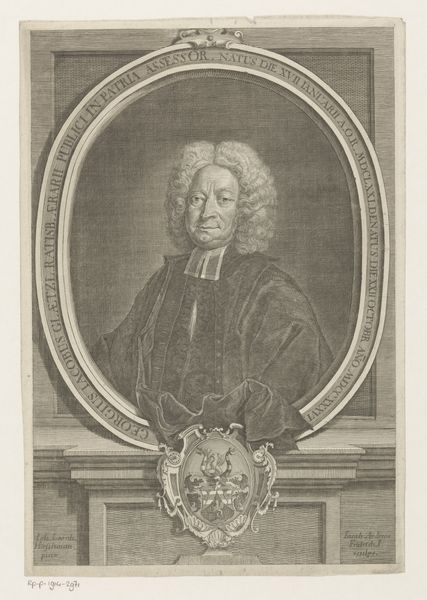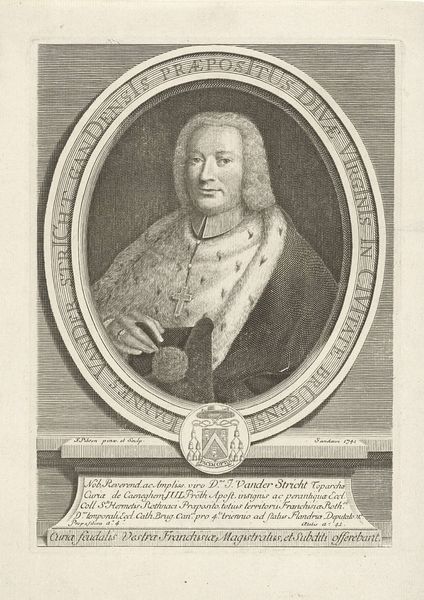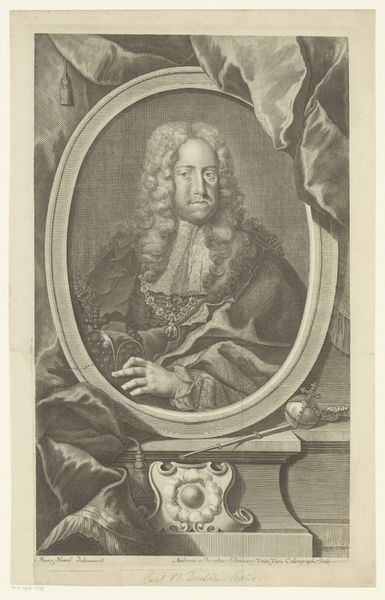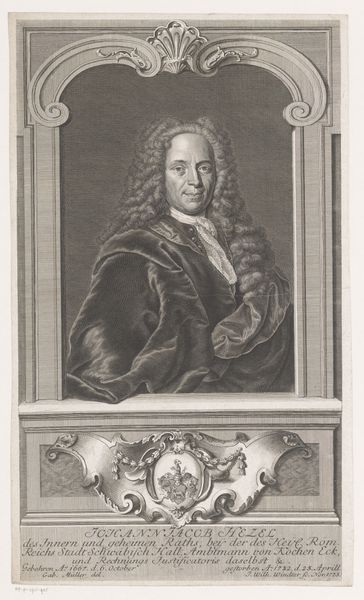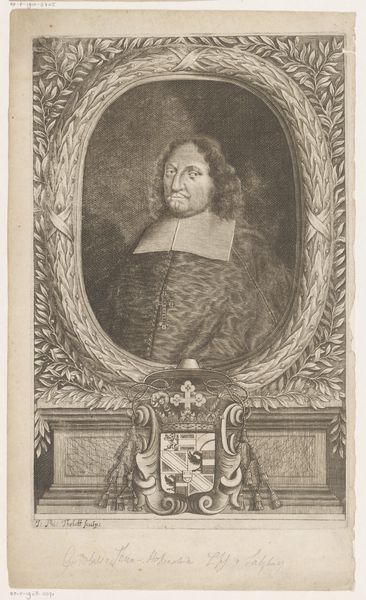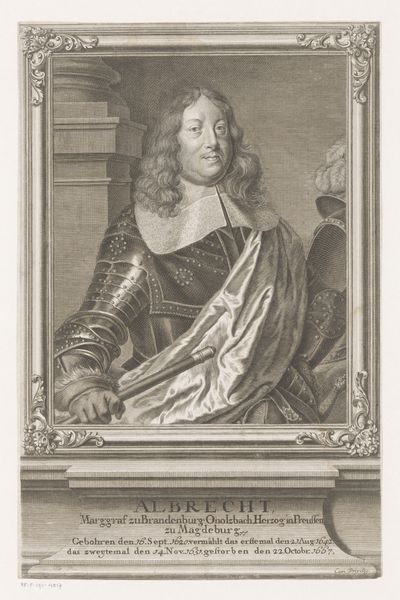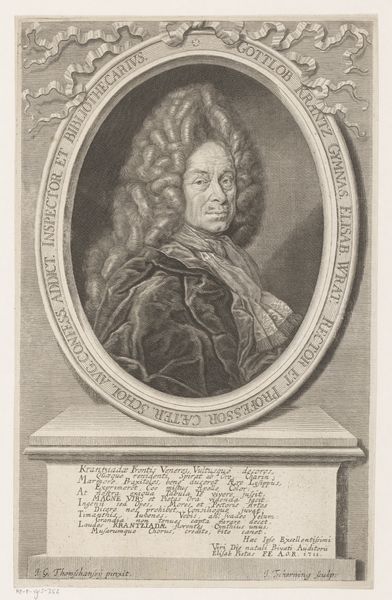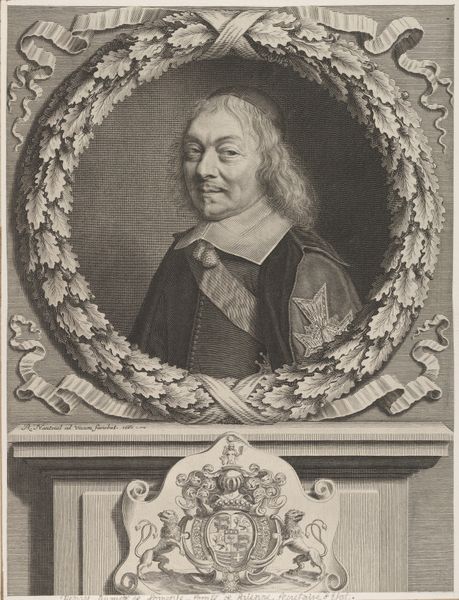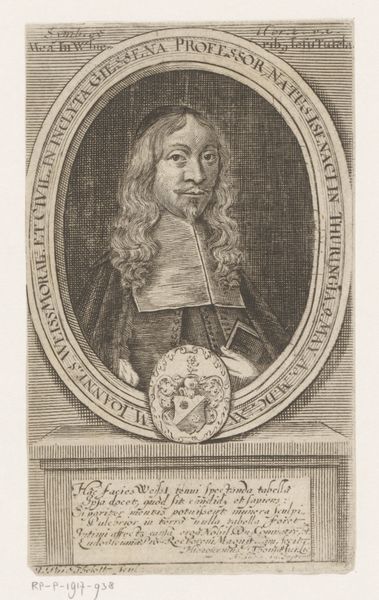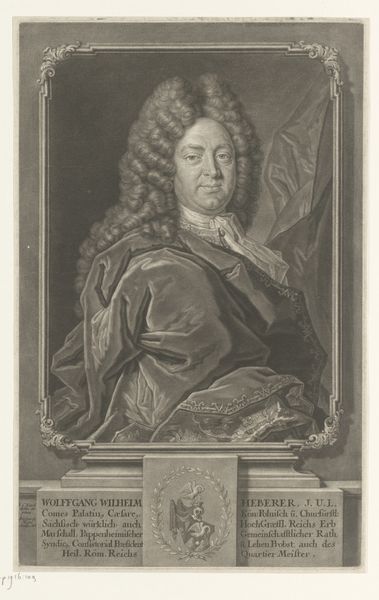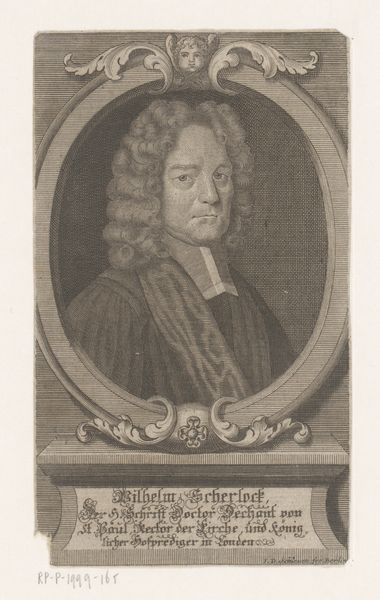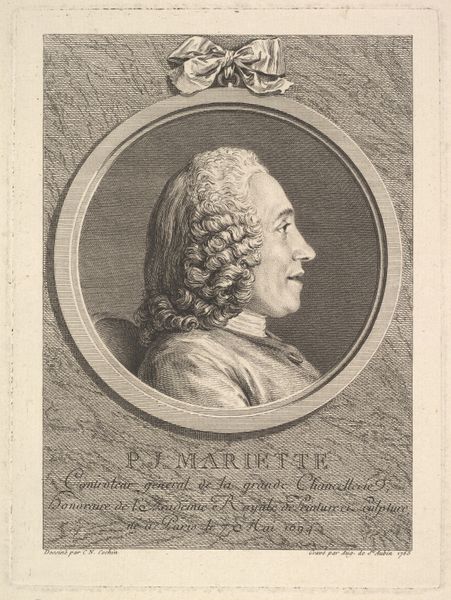
engraving
#
portrait
#
baroque
#
old engraving style
#
history-painting
#
engraving
#
historical font
Dimensions: height 191 mm, width 130 mm
Copyright: Rijks Museum: Open Domain
Curator: Look at this engraving, likely dating between 1690 and 1697. It’s entitled “Portret van Anselm Franz von Ingelheim,” housed right here at the Rijksmuseum, and it was created by Leonhard Heckenauer. Editor: It immediately strikes me as meticulously constructed, almost architectural in its rigidity. The subject seems confined by the ornamental frame, the details precisely rendered. The tones create a sense of formality. Curator: What’s intriguing to me is Heckenauer's method of production. The engraving medium allows for widespread distribution; the print would have circulated among the social networks to which Anselm Franz von Ingelheim belonged, reinforcing his power and image. We're seeing the making of a celebrity, if you will, via reproductive technologies. Editor: I find the ornamental frame significant. The laurel wreath, carefully incised, and the shield with its complex heraldry all speak to a desire to contain and codify meaning. Each mark contributes to the visual encoding of status and identity within the established language of Baroque portraiture. Curator: Precisely! The labor involved in such a detailed engraving – each line meticulously etched – is considerable. The accessibility of the print speaks volumes about the democratization of images during the era and the new ways to reproduce wealth or power for a growing public. Editor: It is fascinating to think of that labor, especially when contemplating the resulting play of light and shadow on von Ingelheim’s face. He is humanized within all of this ornamental complexity. The artist’s touch, or at least the illusion of it, is always there, carefully mediated, but there nonetheless. Curator: Yes, there's a real tension. The act of producing multiple prints means this image exists within an economy; both image and the man depicted within are essentially commodities to be circulated and consumed. This wasn't just art; it was a form of social currency. Editor: Thank you. Considering that it offers fresh perspectives that draw from structural underpinnings, it can illuminate how artworks participate in communication beyond the art itself. Curator: Exactly. Considering the original intentions, the social use of prints for image creation goes far beyond what the artwork presents itself to be.
Comments
No comments
Be the first to comment and join the conversation on the ultimate creative platform.
